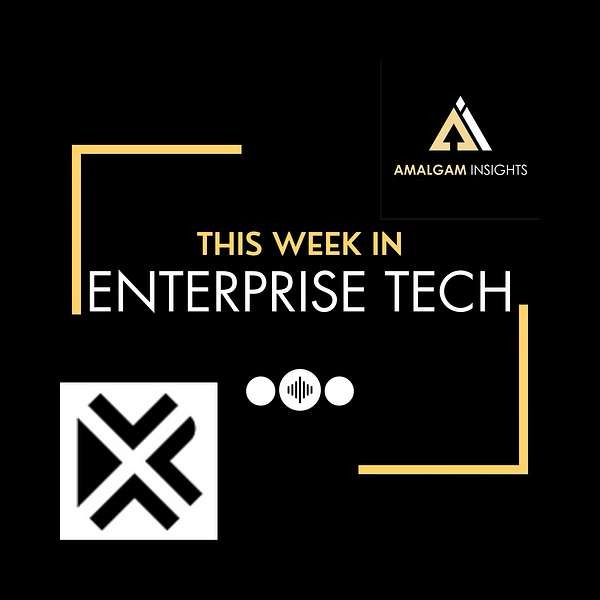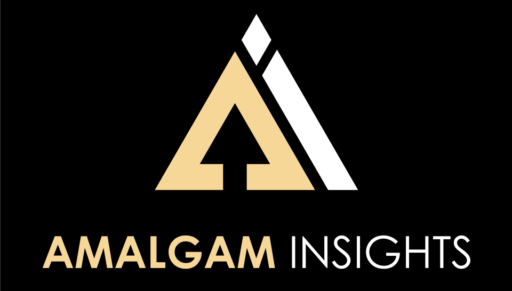
Welcome back to This Week in Enterprise Technology, Hyoun Park and Charles Araujo analyze the latest enterprise technology announcements and how they will affect your business and your bosses’ expectations.
Join TWIET as we guide CIOs and technical managers through the strategic ramifications behind the vendor hype, product innovation, and the avalanches of money going in and out of enterprise tech. As always, this podcast is available in audio, video, and broken up into sections for your benefit.
Audio Podcast: https://www.buzzsprout.com/2319034/episodes/16252199
This Week in Enterprise Technology, Hyoun Park and Charles Araujo critically assess last week’s biggest tech news:
- AWS Enhances Amazon Connect with Generative AI Tools
- AWS Takes on AI Hallucination Challenges
- AWS Bedrock Adds Multi-Agent Orchestration and Model Routing
- AWS Centralizes AI Efforts with SageMaker
- Casey Newton Examines AI Skepticism’s Comforts
- Emergence AI Coordinates Multi-Vendor Agents
- Exa Redefines Generative Search Experiences
- MLCommons Benchmarks LLM Output Risks
- South Korea’s Unrest Threatens Global Memory Supply
- Werner Vogels on Managing “Simplexity”
- Broadcom Adjusts to Minimize VMware Migration Risks
AWS Upgrades Amazon Connect with New Generative AI Features
Amazon Connect has been a successful cloud contact center product and contact center has been one of the clearest areas for AI to provide productivity benefits and increase potential revenue transactions, AWS re:invent was an opportunity to announce the latest generative AI advancements within Connect. Charles and Hyoun discuss the opportunities for contact centers to adopt AI.
Source:
Maria Deutscher from Silicon Angle: https://siliconangle.com/2024/12/01/aws-upgrades-amazon-connect-new-generative-ai-features/
AWS Tackles AI Hallucinations
AWS launches Automated Reasoning checks to cross reference outputs with known facts and enterprise data. Although this is not as novel as AWS was stating, it is a valuable step forward. Hyoun and Charles debate the utility of this Automated Reasoning checks and whether AI hallucinations really matter or are just a sign of AI immaturity and inexperience.
Source:
Kyle Wiggers on TechCrunch: https://techcrunch.com/2024/12/03/aws-new-service-tackles-ai-hallucinations/
AWS Bedrock Updates: Multi-Agent Collaboration, Model Routing
AWS announced interesting AI management updates for Amazon Bedrock. Both multi-agent management and prompt routing across models will be useful for enterprises seeking to expand the utility and cost structure of AI. Charles and Hyoun wonder if this agent management will cover the bill given the wide variety of agents that are starting to appear in the enterprise. .
Source:
AWS Wraps Everything Together Under Sagemaker
AWS create a new umbrella brand that includes data studio, data lake, analytics, and data management. Hyoun and Charles argue about whether Sagemaker, best known as a data science tool, was the right umbrella brand for these data efforts.
Source:
Casey Newton Examines AI Skepticism’s Comforts
One of TWIET’s favorite journalists, Casey Newton, weigh in on the false comfort of AI skepticism. Newton argues that the potential harm of AI is being underestimated by those who simply think that AI is full of lies or incompetent. Charles and Hyoun discuss a more realistic path for IT departments to consider as they deploy AI.
Source:
Casey Newton on Platformer: https://www.platformer.news/ai-skeptics-gary-marcus-curve-conference/
Emergence AI Coordinates Multi-Vendor Agents
Start up Emergence AI announced its autonomous multi-agent AI orchestrator. At a time on every enterprise platform seems to be coming out with its own set of agents, Hyoun and Charles think it is about time for a third-party agent orchestration solution to hit the market and get some traction.
Source
Carl Franzen on VentureBeat: https://venturebeat.com/ai/emergences-ai-orchestrator-launches-to-do-what-big-tech-offerings-cant-play-well-with-others/
Exa Redefines Generative Search Experiences
The MIT Technology Review covered a startup named Exa taking a novel approach to Gen AI based web searches with the goal of using the web like a database. Charles and Hyoun discuss the scale and results for this approach.
Source:
Will Douglas Heaven on MIT Technology Review: https://www.technologyreview.com/2024/12/03/1107726/the-startup-trying-to-turn-the-web-into-a-database/
MLCommons Benchmarks LLM Output Risks
MLCommons has released its AIluminate 1.0 benchmarks to describe several categories of harm including sex crimes, violence, and defamation risks. Hyoun and Charles discuss past challenges regarding model benchmarking and risks.
Source:
MLCommons: https://ailuminate.mlcommons.org/benchmarks/
South Korea’s Unrest Threatens Global Memory Supply
South Korea saw government unrest in an attempted military coup last week. Although we are not expert political scientists, international supply chains do affect our ability to source IT. We discussed the ramifications of South Korea earning 60% of the global memory, check market and considerations for the CIO in looking at geopolitical strife.
Source:
Prasanth Aby Thomas on CIO.com: https://www.cio.com/article/3617847/south-koreas-political-unrest-threatens-the-stability-of-global-tech-supply-chains.html
Werner Vogels On Managing “Simplexity”
At Amazon re:invent, Amazon CTO pointed out both that complexity is inevitable and that there are two types of complexity that are important for technical audiences to consider, including a new concept of “simplexity”.. Hyoun is reminded of the Nassim Taleb concept of antifragility while Charles digs deeper into the strategic issues of technical debt.
Source:
Tom Krazit on Runtime News: https://www.runtime.news/werner-vogels-complexity-is-inevitable/
Broadcom Adjusts to Minimize VMware Migration Risks
Broadcom has had to call back from its initial plans of making its top 2000 customers all direct and has handed much of that business back to its channels. With help from The Register and Canalys, Hyoun and Charles discuss repercussions for tech sourcing.
Source:
Simon Starwood on The Register: https://www.theregister.com/2024/12/05/vmware_user_migration_plans/
